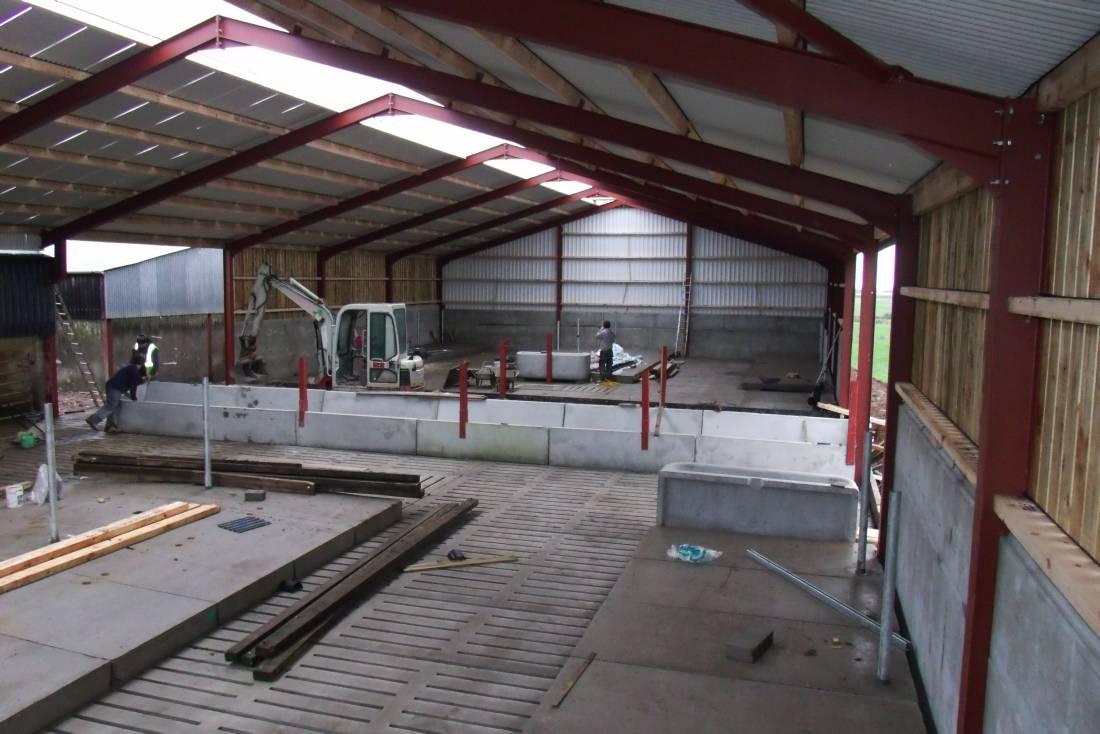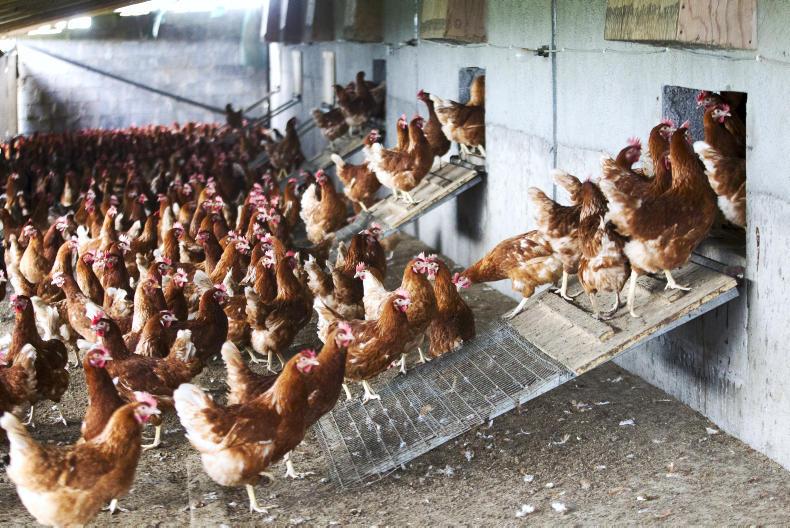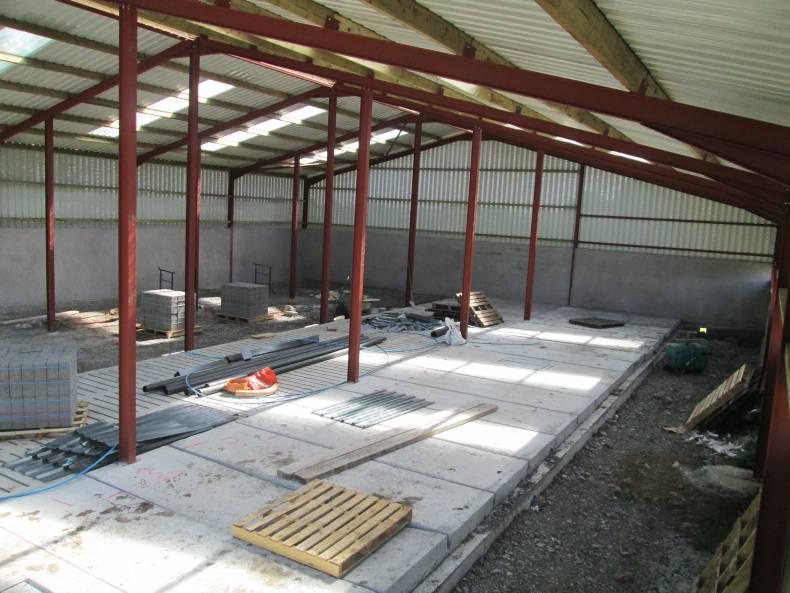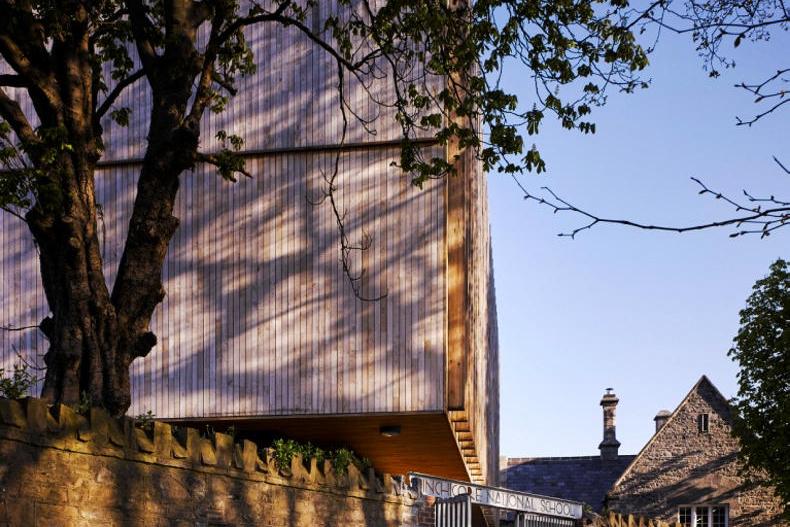There is still work to do before DAERA opens Tier 2 of the Farm Business Improvement Scheme (FBIS) on 19 December 2016, but what is clear is that the amount of detail required to support an application will be significant, especially where the project involves construction of a new building.
Tier 2 is designed to support transformation of a farm business, with a maximum 40% grant available of up to £250,000. There is no definitive list of what is eligible for funding, except that all items purchased must be new. Applications will be assessed against the five key themes of:
Contribution to sustainable growth.Environment, weather resistance and climate change.Animal and plant health.Occupational health and safety.Production and resource efficiency.Examples of potential investments highlighted by DAERA include calf housing, a suckler house incorporating calving facilities, new roofed silos, sheep housing, pig housing, dairy cow accommodation, computer-linked milking parlours and equipment, poultry housing, glasshouses and new crop storage facilities.
General purpose and machinery sheds are not eligible, neither is concreting a lane, repairing an existing building or replacing the tin on the roof of a shed. However, new equipment (such as a milking robot) could be installed into an existing shed as long as an engineer’s certificate can be provided to show that the building is structurally fit-for-purpose.
As well as completion of the online health and safety self-assessment, each applicant to Tier 2 will be expected to submit a “robust, viable and sustainable business plan”. A template is included on the DAERA website, and from week beginning 21 November 2016 a cashflow calculator will also be available to help applicants provide detailed financial projections to support their plan.
Credit backing
The next item to support an application is an indication of credit backing from a bank or other lending institution. The banks will want to assess the completed business plan, and have indicated that this process could take up to a month.
For construction projects, applicants will also have to use a farm investment planner map, available online. The tool is to be used at the initial stages to produce a sketch of proposed changes to the farmyard. It will help DAERA staff to do an early check on the planned development without the need for a site visit. To access the online map, an applicant will need to go to the online services section of the DAERA website (Government gateway access).
The online planner map will also help both the applicant and DAERA to identify if planning permission is required for the project. Normally, planning permission is required where the new construction is:
More than 500m2 in size.More than 75m from an existing yard.Less than 75m from a third party dwelling.Less than 24m from the middle of a first or second class road.Less than 9m from the middle of other classes of roads.If none of these apply, the construction may fall under ‘‘permitted development’’. An applicant could then choose to apply for a certificate of lawful use/development, or choose to apply to the scheme without this certificate, but subject to an environmental assessment by DAERA. This assessment will check for potential environmental issues – for example, the proximity to sensitive areas such as raised bogs.
Applications which are assessed as having significant effects will be rejected and the applicant will have to go through the formal planning process. Where planning is required, it must either be applied for, or obtained, before an application to Tier 2 can proceed.
Completing a drawing or sketch on the online farm investment planner map also does not get around the fact that a final version of the planned site should be drawn out to the exact specification prior to application by a suitably qualified chartered engineer.
Other requirements
Beyond planning, there is a raft of other legislative requirements that a project must meet. This includes Construction (Design & Management) Regulations (NI) 2016, legislation which is promoted and enforced by the Health and Safety Executive for NI (HSENI). It requires contractors to plan, manage and monitor construction work, and to use only properly trained staff.
Also, various products used in construction, including steelwork, must be CE marked. Even a welder making trusses for a shed must be suitably qualified and therefore covered by the Europe-wide standard. Applicants will be required to sign a declaration that, if successful, their project will be carried out in accordance with relevant legislative requirements and that only competent contractors will be used.
Tier 2 Timeline
Completed applications for Tier 2 funding can be submitted to DAERA from 19 December 2016, with the scheme closing to applications on 24 February 2017.
Speaking at the first of the a series of roadshows on the new capital grant scheme, held in Enniskillen earlier this week, Alan Hopps from DAERA said that he expected letters of offer to be issued to successful applicants by the summer of 2017. An applicant then usually has up to 18 months to complete the project.
If a potential applicant is not yet in a position to apply, a second tranche of Tier 2 is due to open in the autumn of 2017.
Tier 2 scoring
Similar to Tier 1, applications to Tier 2 will be scored against various criteria. A maximum of 20 marks are available for value-for-money (reasonableness of costs as outlined in the business plan). Zero is the baseline, with additional marks added for projects with lower costs than expected.
It is up to the applicant to ensure value-for-money. They will be expected to obtain quotes from suitable contractors, and may have to place an advert locally inviting tenders for the work.
The business plan is also assessed, with a maximum of 48 marks awarded for a project that is in line with the key themes of the scheme, including supply chain integration, business growth and environmental mitigation. Each business plan must achieve a minimum threshold score of 25 marks.
There are then 12 marks for an online submission, 10 marks for an applicant who is under 40 and head of holding, and 10 marks for someone who holds a minimum level II qualification in agriculture.
Where scores are equal at the end of an assessment, and the tranche is over-subscribed, priority will be given to those with the highest marks for their business plan.
Read more
Special focus: planning for TAMS II and FBIS grants
There is still work to do before DAERA opens Tier 2 of the Farm Business Improvement Scheme (FBIS) on 19 December 2016, but what is clear is that the amount of detail required to support an application will be significant, especially where the project involves construction of a new building.
Tier 2 is designed to support transformation of a farm business, with a maximum 40% grant available of up to £250,000. There is no definitive list of what is eligible for funding, except that all items purchased must be new. Applications will be assessed against the five key themes of:
Contribution to sustainable growth.Environment, weather resistance and climate change.Animal and plant health.Occupational health and safety.Production and resource efficiency.Examples of potential investments highlighted by DAERA include calf housing, a suckler house incorporating calving facilities, new roofed silos, sheep housing, pig housing, dairy cow accommodation, computer-linked milking parlours and equipment, poultry housing, glasshouses and new crop storage facilities.
General purpose and machinery sheds are not eligible, neither is concreting a lane, repairing an existing building or replacing the tin on the roof of a shed. However, new equipment (such as a milking robot) could be installed into an existing shed as long as an engineer’s certificate can be provided to show that the building is structurally fit-for-purpose.
As well as completion of the online health and safety self-assessment, each applicant to Tier 2 will be expected to submit a “robust, viable and sustainable business plan”. A template is included on the DAERA website, and from week beginning 21 November 2016 a cashflow calculator will also be available to help applicants provide detailed financial projections to support their plan.
Credit backing
The next item to support an application is an indication of credit backing from a bank or other lending institution. The banks will want to assess the completed business plan, and have indicated that this process could take up to a month.
For construction projects, applicants will also have to use a farm investment planner map, available online. The tool is to be used at the initial stages to produce a sketch of proposed changes to the farmyard. It will help DAERA staff to do an early check on the planned development without the need for a site visit. To access the online map, an applicant will need to go to the online services section of the DAERA website (Government gateway access).
The online planner map will also help both the applicant and DAERA to identify if planning permission is required for the project. Normally, planning permission is required where the new construction is:
More than 500m2 in size.More than 75m from an existing yard.Less than 75m from a third party dwelling.Less than 24m from the middle of a first or second class road.Less than 9m from the middle of other classes of roads.If none of these apply, the construction may fall under ‘‘permitted development’’. An applicant could then choose to apply for a certificate of lawful use/development, or choose to apply to the scheme without this certificate, but subject to an environmental assessment by DAERA. This assessment will check for potential environmental issues – for example, the proximity to sensitive areas such as raised bogs.
Applications which are assessed as having significant effects will be rejected and the applicant will have to go through the formal planning process. Where planning is required, it must either be applied for, or obtained, before an application to Tier 2 can proceed.
Completing a drawing or sketch on the online farm investment planner map also does not get around the fact that a final version of the planned site should be drawn out to the exact specification prior to application by a suitably qualified chartered engineer.
Other requirements
Beyond planning, there is a raft of other legislative requirements that a project must meet. This includes Construction (Design & Management) Regulations (NI) 2016, legislation which is promoted and enforced by the Health and Safety Executive for NI (HSENI). It requires contractors to plan, manage and monitor construction work, and to use only properly trained staff.
Also, various products used in construction, including steelwork, must be CE marked. Even a welder making trusses for a shed must be suitably qualified and therefore covered by the Europe-wide standard. Applicants will be required to sign a declaration that, if successful, their project will be carried out in accordance with relevant legislative requirements and that only competent contractors will be used.
Tier 2 Timeline
Completed applications for Tier 2 funding can be submitted to DAERA from 19 December 2016, with the scheme closing to applications on 24 February 2017.
Speaking at the first of the a series of roadshows on the new capital grant scheme, held in Enniskillen earlier this week, Alan Hopps from DAERA said that he expected letters of offer to be issued to successful applicants by the summer of 2017. An applicant then usually has up to 18 months to complete the project.
If a potential applicant is not yet in a position to apply, a second tranche of Tier 2 is due to open in the autumn of 2017.
Tier 2 scoring
Similar to Tier 1, applications to Tier 2 will be scored against various criteria. A maximum of 20 marks are available for value-for-money (reasonableness of costs as outlined in the business plan). Zero is the baseline, with additional marks added for projects with lower costs than expected.
It is up to the applicant to ensure value-for-money. They will be expected to obtain quotes from suitable contractors, and may have to place an advert locally inviting tenders for the work.
The business plan is also assessed, with a maximum of 48 marks awarded for a project that is in line with the key themes of the scheme, including supply chain integration, business growth and environmental mitigation. Each business plan must achieve a minimum threshold score of 25 marks.
There are then 12 marks for an online submission, 10 marks for an applicant who is under 40 and head of holding, and 10 marks for someone who holds a minimum level II qualification in agriculture.
Where scores are equal at the end of an assessment, and the tranche is over-subscribed, priority will be given to those with the highest marks for their business plan.
Read more
Special focus: planning for TAMS II and FBIS grants










SHARING OPTIONS